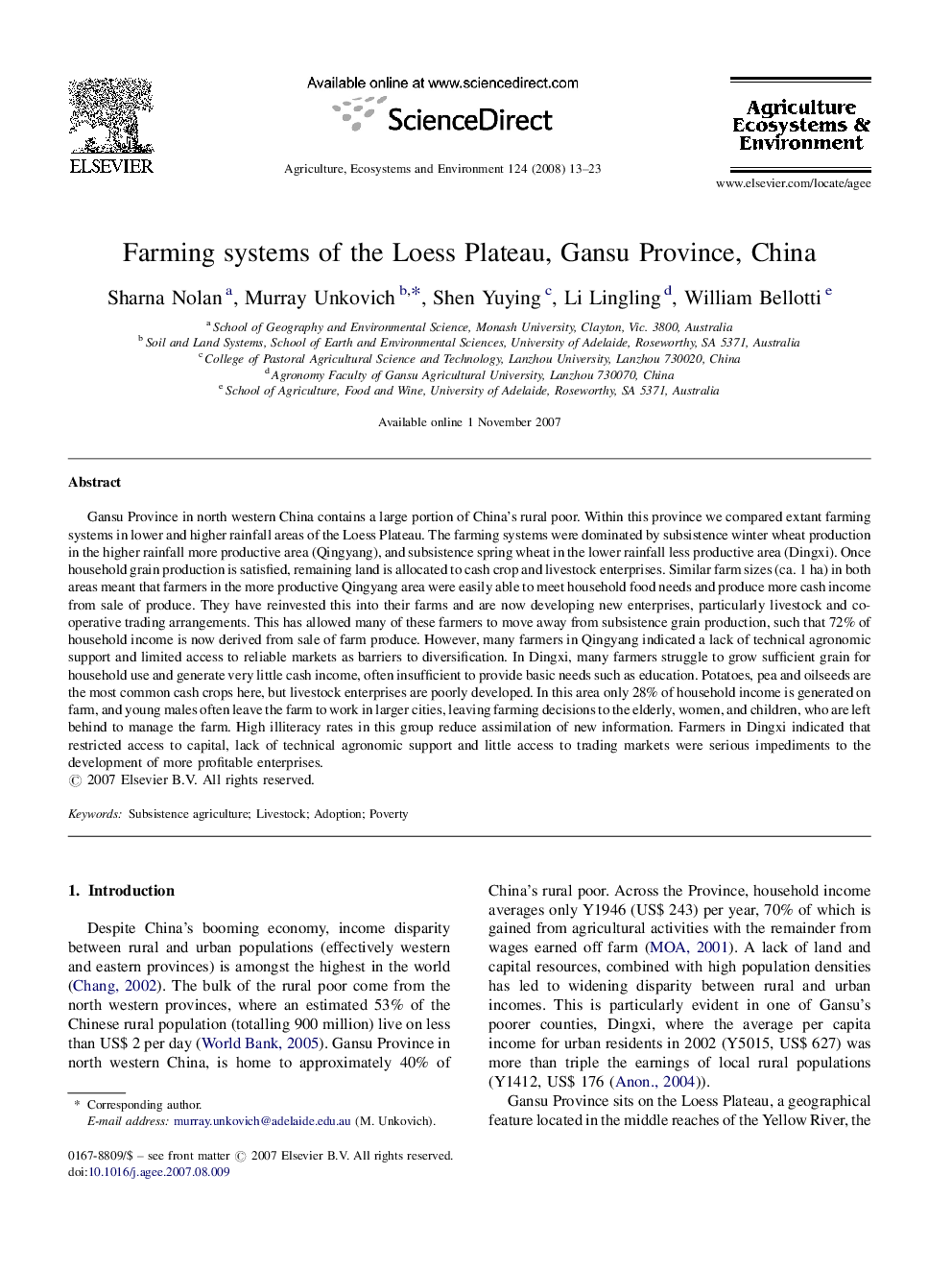| کد مقاله | کد نشریه | سال انتشار | مقاله انگلیسی | نسخه تمام متن |
|---|---|---|---|---|
| 2415737 | 1552138 | 2008 | 11 صفحه PDF | دانلود رایگان |

Gansu Province in north western China contains a large portion of China's rural poor. Within this province we compared extant farming systems in lower and higher rainfall areas of the Loess Plateau. The farming systems were dominated by subsistence winter wheat production in the higher rainfall more productive area (Qingyang), and subsistence spring wheat in the lower rainfall less productive area (Dingxi). Once household grain production is satisfied, remaining land is allocated to cash crop and livestock enterprises. Similar farm sizes (ca. 1 ha) in both areas meant that farmers in the more productive Qingyang area were easily able to meet household food needs and produce more cash income from sale of produce. They have reinvested this into their farms and are now developing new enterprises, particularly livestock and co-operative trading arrangements. This has allowed many of these farmers to move away from subsistence grain production, such that 72% of household income is now derived from sale of farm produce. However, many farmers in Qingyang indicated a lack of technical agronomic support and limited access to reliable markets as barriers to diversification. In Dingxi, many farmers struggle to grow sufficient grain for household use and generate very little cash income, often insufficient to provide basic needs such as education. Potatoes, pea and oilseeds are the most common cash crops here, but livestock enterprises are poorly developed. In this area only 28% of household income is generated on farm, and young males often leave the farm to work in larger cities, leaving farming decisions to the elderly, women, and children, who are left behind to manage the farm. High illiteracy rates in this group reduce assimilation of new information. Farmers in Dingxi indicated that restricted access to capital, lack of technical agronomic support and little access to trading markets were serious impediments to the development of more profitable enterprises.
Journal: Agriculture, Ecosystems & Environment - Volume 124, Issues 1–2, March 2008, Pages 13–23